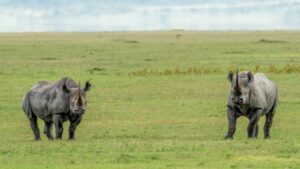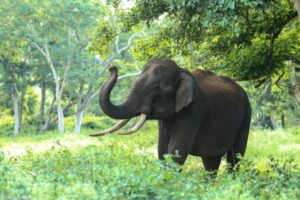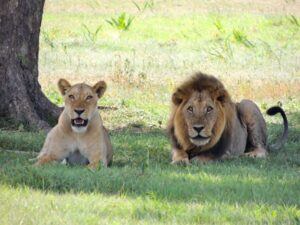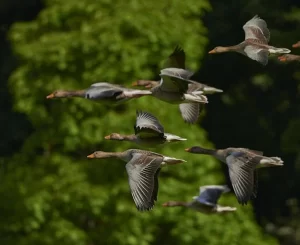Masai Mara National Reserve is nestled in the heart of Kenya’s expansive savannahs. Masai Mara National Reserve stands as a testament to nature’s grandeur. Its vast grasslands, dotted with acacia trees and traversed by the iconic Mara River.
It provides a stage for one of the most spectacular wildlife spectacles on Earth the Great Migration. Choosing the perfect time to visit the Masai Mara involves understanding the intricate dance of seasons, weather patterns, and wildlife movements.
Whether you’re a wildlife enthusiast, a nature photographer, or simply seeking an unforgettable safari experience, timing your visit to coincide with the reserve’s natural rhythms can greatly enhance your adventure.
Each month brings different weather patterns and wildlife activities, making it essential to understand the best times to visit based on your interests and expectations.
January in Masai Mara National reserve:
January falls in the dry season, characterized by warm temperatures and clear skies. The grass is shorter, making it easier to spot wildlife. This period is excellent for general game viewing as animals are drawn to permanent water sources. Bird watching is also rewarding due to the presence of migratory species. 
February in Masai Mara National reserve:
Similar to January, February is dry with pleasant weather conditions. Wildlife is abundant, and the Big Five (lion, leopard, elephant, buffalo, and rhino) are relatively easy to spot. However, predators are more active during this time, offering thrilling viewing opportunities. The dry conditions and clear visibility make this an ideal time for photographers.
March in Masai Mara National reserve:
March marks the beginning of the long rainy season. Though, early in the month, conditions can still be favorable for wildlife viewing. As the rains intensify, the terrain becomes muddier and more challenging to navigate. While the rains rejuvenate the landscape, the thicker vegetation can make wildlife spotting more difficult.
April in Masai Mara National reserve:
April is typically the wettest month in the Masai Mara. Heavy rains lead to lush landscapes, but also to slippery roads and potential flooding in some areas. Wildlife disperses as water becomes more available throughout the reserve. However, this is a quiet time with fewer tourists, offering a more solitary experience for those willing to brave the elements.
May in Masai Mara National reserve:
May continues with the long rains, though they start to taper off towards the end of the month. The scenery is vibrant, and the reserve is less crowded. Wildlife viewing can be more challenging due to the dense vegetation, but bird enthusiasts will find this period rewarding as migratory birds are still present.
June in Masai Mara National reserve:
June marks the transition from the wet to the dry season. The rains subside, and the park begins to dry out. This is a shoulder month with fewer tourists, making it an excellent time for a quieter experience. Wildlife viewing improves as animals start to congregate around water sources again.
July in Masai Mara National reserve:
July is the beginning of the peak tourist season, coinciding with the arrival of the Great Migration. Huge herds of wildebeest and zebras begin to move into the Masai Mara from the Serengeti. The spectacle of thousands of animals crossing the Mara River is a highlight. Dry weather and thinning vegetation enhance game viewing opportunities.
August in Masai Mara National reserve:
August is one of the best months to visit the Masai Mara. The Great Migration is in full swing, and river crossings are frequent. Predators, especially lions, leopards, and crocodiles, take advantage of the abundance of prey, leading to dramatic wildlife interactions. The dry conditions ensure excellent visibility and accessibility throughout the reserve.
September in Masai Mara National reserve:
September offers continued exceptional viewing of the Great Migration, with many animals still present in the reserve. The dry weather persists, and the landscape is dotted with large herds. Predator activity remains high, providing thrilling safari experiences. This month is ideal for witnessing the full breadth of the Mara’s wildlife spectacle.
October in Masai Mara National reserve:
October sees the tail end of the Great Migration as the herds begin to move back to the Serengeti. Wildlife viewing is still excellent, and the weather remains dry and warm. The thinning crowds make it a favorable time for a more relaxed visit. Mind you Predators are still active, capitalizing on the remaining prey.
November:
November is characterized by the short rains, which usually start mid-month. The rains are less intense than those in the long rainy season, and the landscape begins to green. Wildlife viewing is still good early in the month, but the increasing rains can make roads muddy and more challenging. however, the short rains also bring the return of migratory birds.
December in Masai Mara National reserve:
December experiences the short rains at the beginning of the month, which usually taper off towards Christmas. The landscape is lush and green, attracting herbivores, which in turn draw predators. This period sees a mix of resident and migratory wildlife. The festive season brings more tourists, but the combination of good weather and diverse wildlife makes it a great time to visit.
Conclusion
Ultimately, the best time to visit the Masai Mara is when it aligns with your interests and preferences. Whether you’re drawn to the thrill of witnessing the migration or the tranquility of the off-peak season. The vibrant colors of the landscape after the rains. Each season promises an unforgettable safari experience in one of Africa’s most iconic wilderness destinations. So, plan your journey wisely. Prepare to be captivated by the timeless beauty and abundant wildlife of the Masai Mara National Reserve. Choose your best time to visit Masai mara for great adventure





